Ultra-wide tires: Unfair advantage in ‘cross?
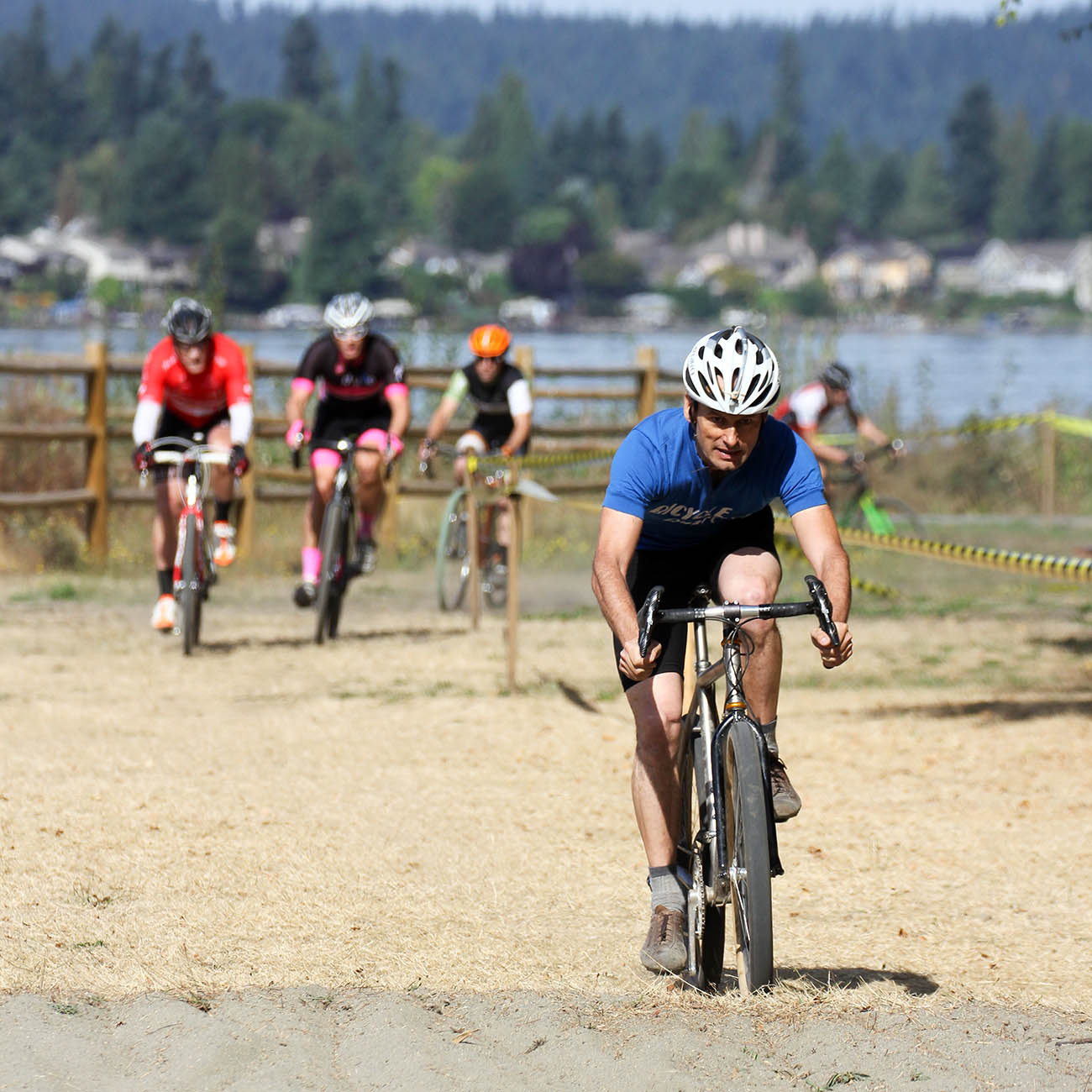
Last weekend was the first cyclocross race in Seattle. Almost every year, the first race catches me by surprise. Summer is over? It’s ‘cross season already?
Usually, I oil the chain on my trusty Alan ‘cross bike and head to the races. This year, the Alan’s tubular tires needed regluing. The glue must cure for 24 hours, and the race was too close for that.
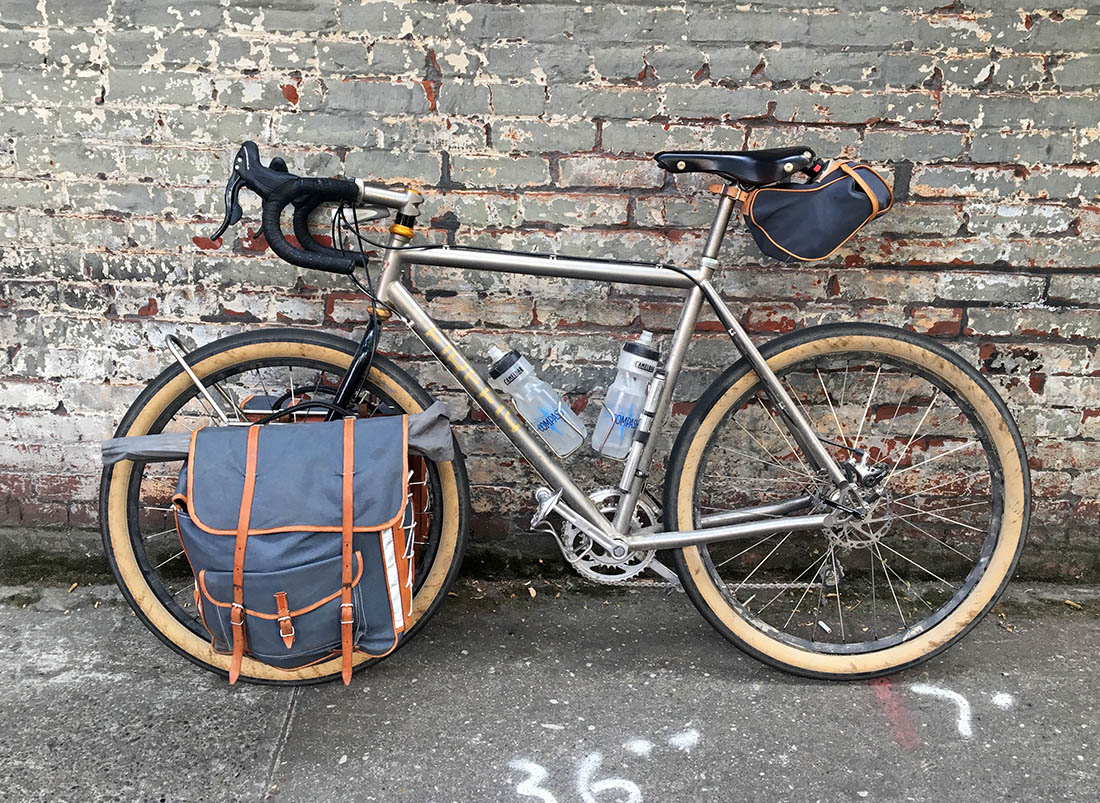
What to do? I looked at my Firefly, still dusty from the Volcano High Pass Challenge and the Bicycle Quarterly Un-Meeting. What if I raced it instead?
The morning of the race, I took off the low-rider rack and two bottle cages, then rode the 25 miles (40 km) to the start. I arrived with just enough time to remove the last bottle cage, unclip the underseat bag, and do a practice lap. I let some air out of the tires, and then it was time to race.
At the start, I was a bit nervous, because I had forgotten to swap my touring pedals for dual-sided mtb pedals. On the bumpy course, clipping in after a remount wasn’t easy. I knew I’d lose some time. And I worried about the grip of my “road” tires at race speeds on the loose stuff, especially the grass. I had entered the Category 4 race. It’s the lowest of the three categories offered, but the fastest racers come out of a season of road racing and are quite fast.
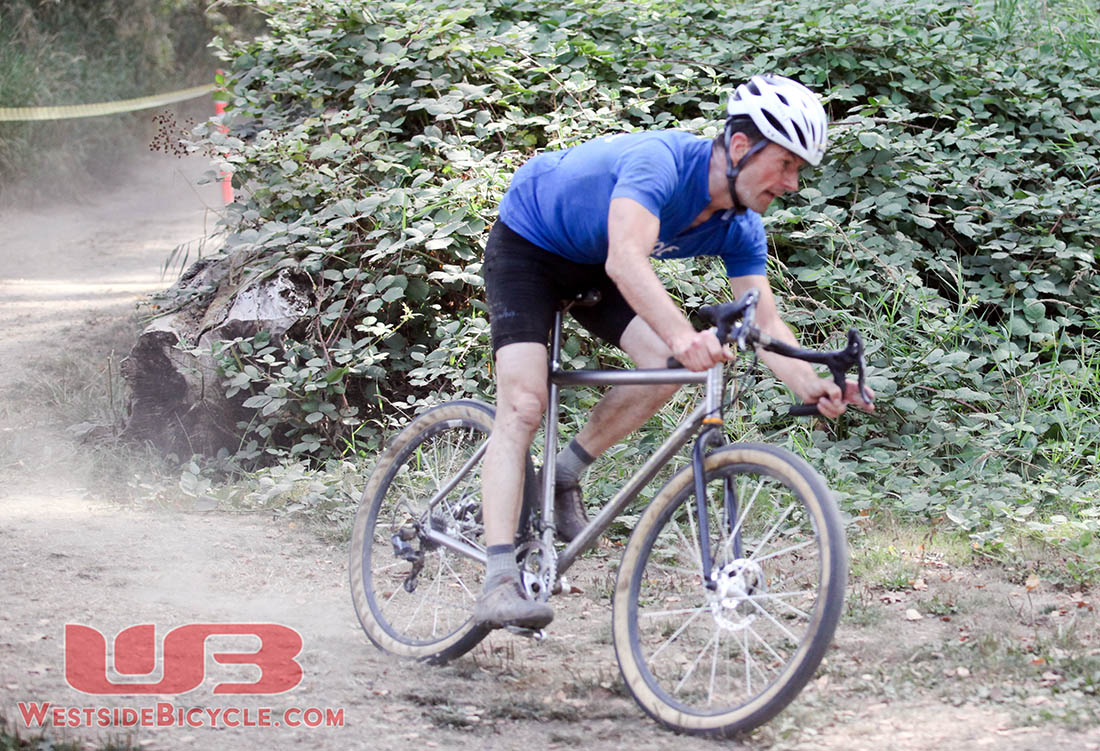
Then we were off! I’ve never been an explosive sprinter, and so I found myself somewhere around 15th position as we went into the first corner. A long straight followed, and I was surprised by how fast my bike went. I know what bumpy grass feels like on 34 mm tires, and it was a totally different experience on 54s. Instead of bouncing, I was able to put down power and ride smoothly.
I had moved up to 3rd position when we reached the first sandpit. And since I hadn’t been working as hard as the others on their narrower tires, I could outrun them. (In the deep sand, even my 54 mm tires didn’t provide enough floatation to make riding more efficient than running.) I took the lead at the exit of the sand pit and never looked back (top photo).
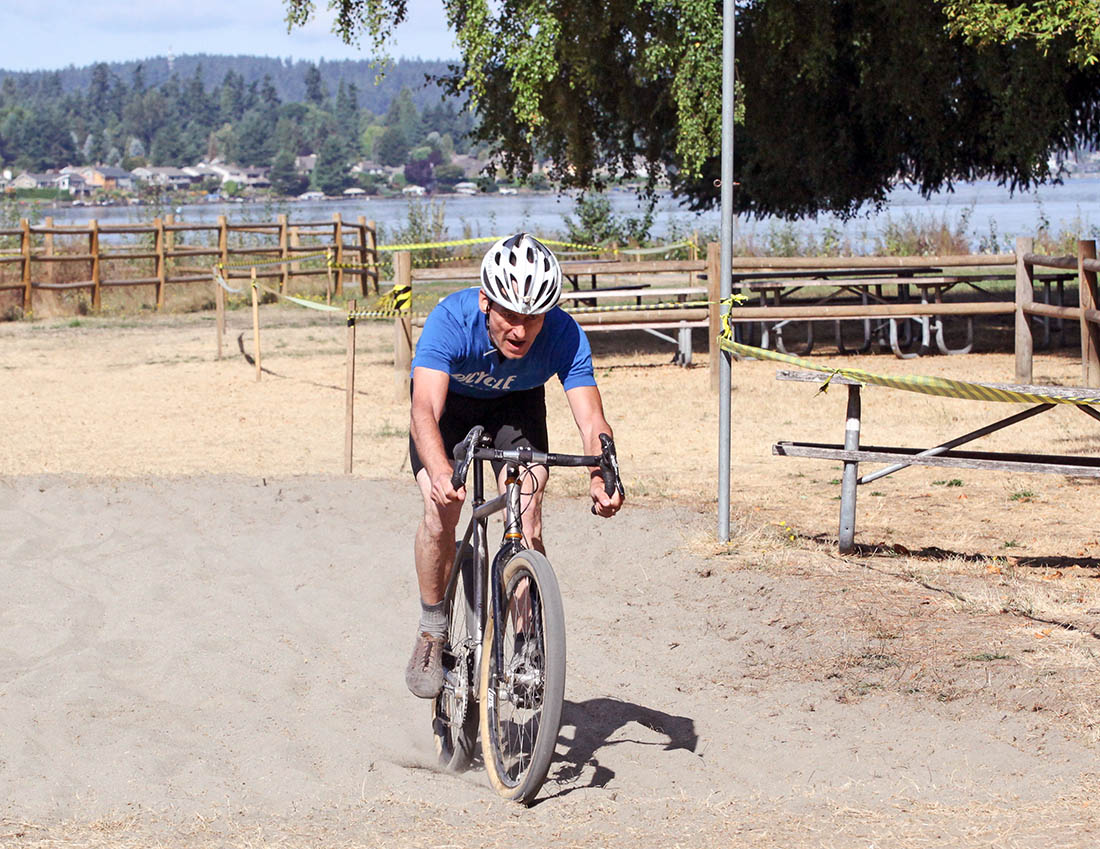
I ran through the next sand pit, too, but the third one was relatively short, and I found that momentum carried me across. Just accelerate hard on the approach and keep going! Where the course doubled back on itself, I could see my pursuers. I was surprised how quickly my gap had grown. I would like to claim superior fitness, but I think the bike’s speed deserves more credit. I’ve raced Cat. 4 in the past, and I’ve never experienced such a speed difference.
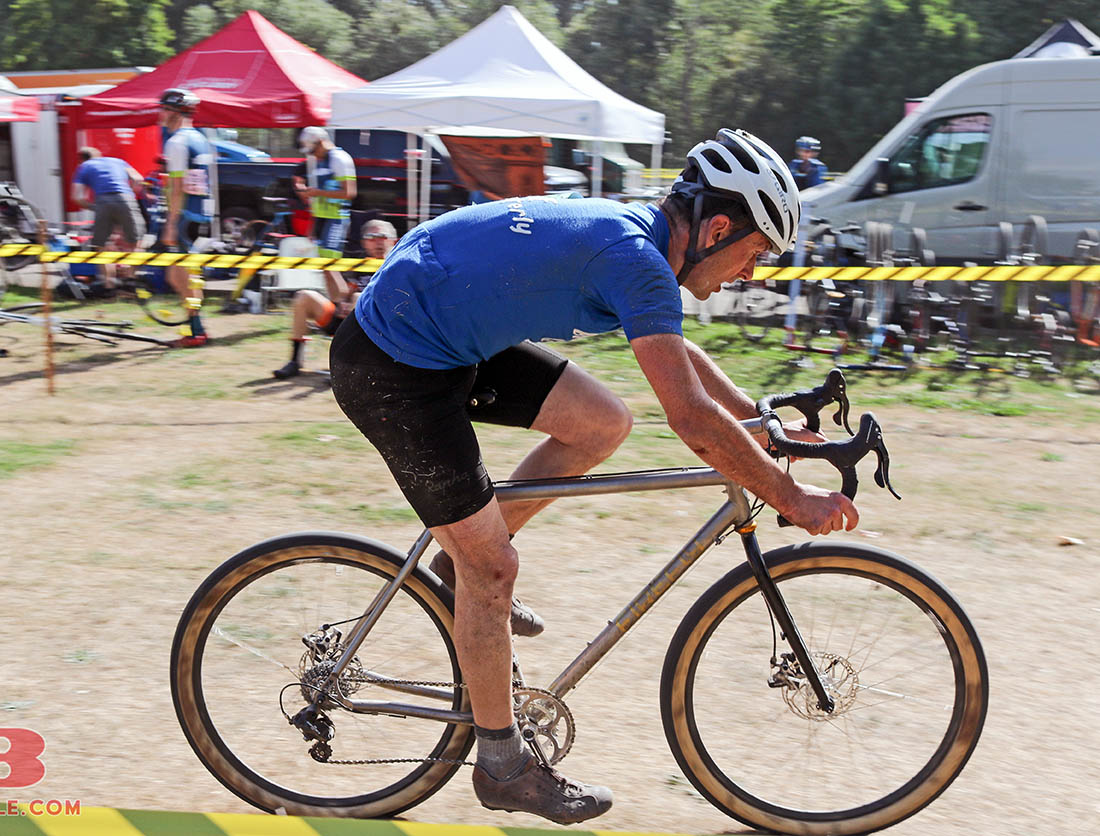
With so much grip, I rarely touched my brakes. I did realize why ‘cross bikes have higher bottom brackets: After leaning deep into a corner, I righted the bike until I thought that I was straight again. When I started pedaling, I was still leaning much further than I thought. I clipped a pedal, and next thing I knew, I was on the ground. My lap times show that I lost 10 or 15 seconds, and my pursuers came back into sight. But adrenalin enhances performance, and I managed to hold onto my lead to take the win after 42 minutes of all-out racing.
What did I learn? First, on bumpy terrain, wider tires are much faster. We already knew this, but the magnitude of the effect surprised even me. Being able to pass other racers at will really represents an unfair advantage. Cornering grip on the loose, but dry, surfaces also was far superior to what I am used to.
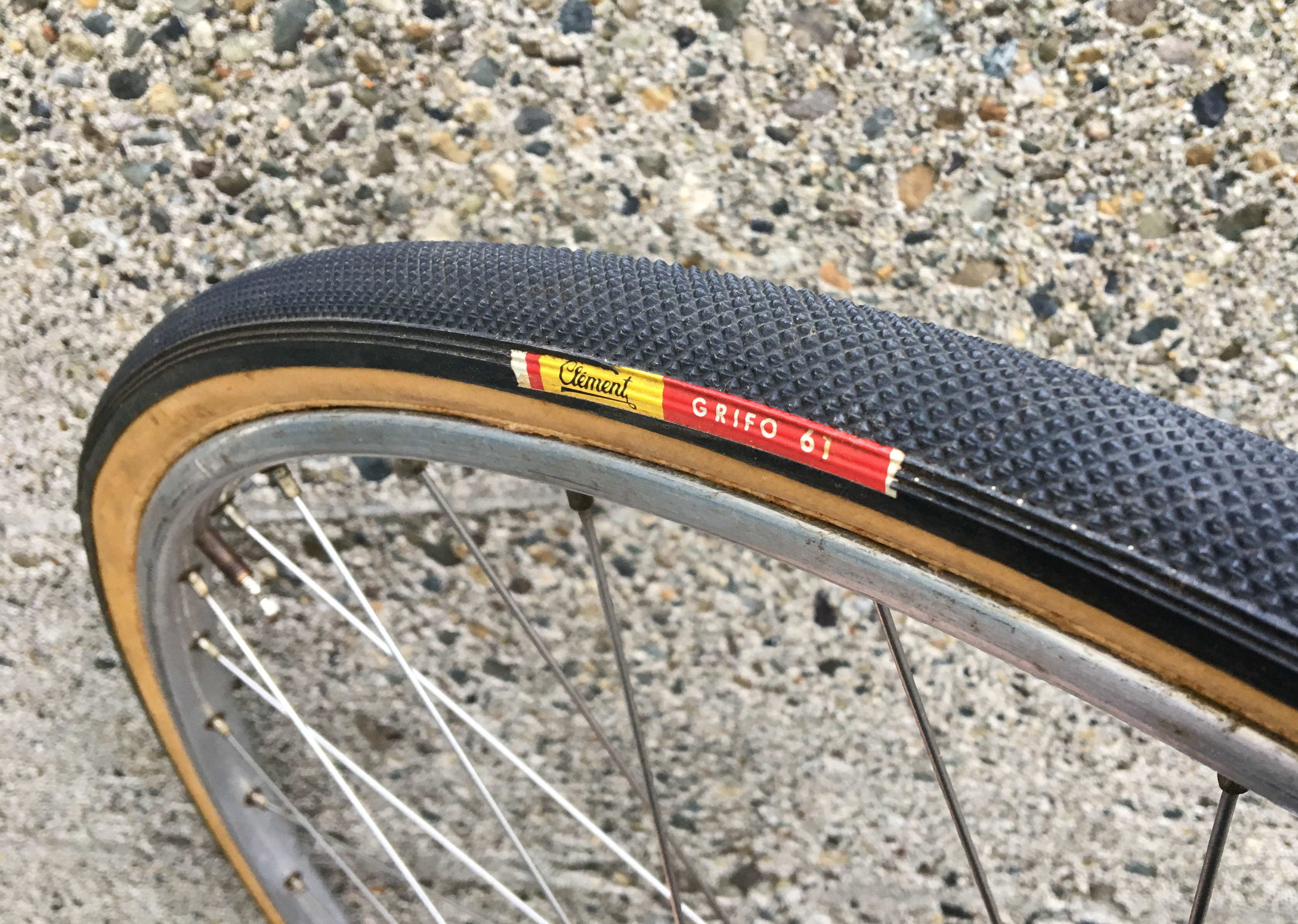
What about the lack of knobs on my tires? We know that on gravel, knobs don’t make any difference, and I found that the same holds true on dirt and even dry grass. Perhaps I shouldn’t have been surprised: Traditional dry-weather ‘cross tires (above) have almost no tread – in fact, they are so smooth that we used to ride them on the road, since they were a little bit wider than the 21 mm racing tubulars we had back then.
Of course, riding the Firefly with its 54 mm tires in a ‘cross race is unfair. The best rider should win, not the rider on the widest tires. Road racing and its muddy cousin, cyclocross, are traditional sports, and the bikes are clearly defined by the rules. It may be possible to make faster bikes, but finding the fastest bike isn’t the point of racing – it’s finding the fastest rider. As BQ contributor Hahn Rossman (below) put it: “Cross is about riding a road bike off-road. You really shouldn’t ride across bumpy terrain on narrow tires, but it’s great fun.”
Cyclocross has an element of underbiking, and that is why the UCI has limited tire widths for professional racers. For amateurs in the U.S., the UCI rules usually don’t apply, but I feel it isn’t in the spirit of the sport to ride a bike that is so blatantly outside the accepted norm.
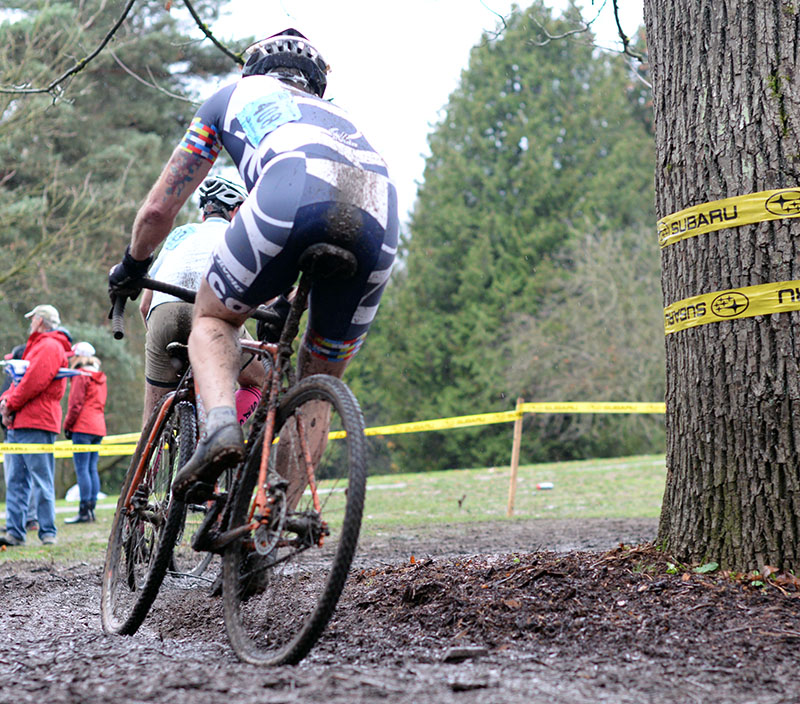
I am also not sure my advantage would persist as the weather turns rainy. On a muddy course, my ultra-wide tires may not work so well. A narrower tire – say 35 to 40 mm wide – digs into the mud and probably creates more lateral resistance when cornering. A super-wide tire may just skate across the muddy surface without finding any grip. Once the weather turns muddy, I could put a set of mountain bike knobbies on the Firefly to find out.
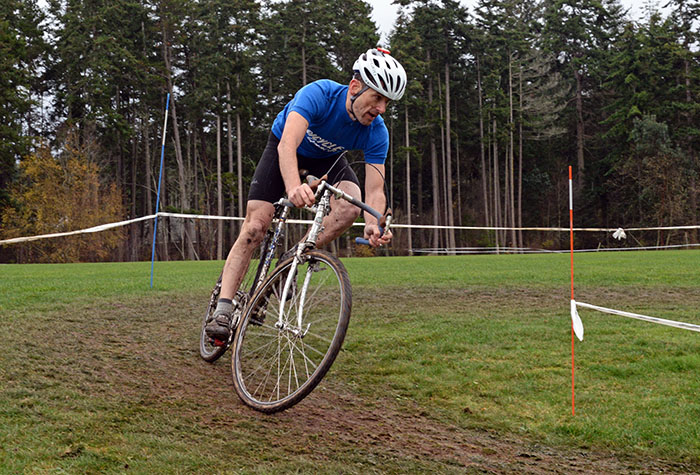
Or I’ll just ride my Alan (above) again, because it’s already set up for muddy riding. In the end, my experiment hasn’t shown anything we didn’t know already: On bumpy surfaces in the dry, wider tires are much faster. We also know that in mud, you need knobs to dig into the surface and generate grip.
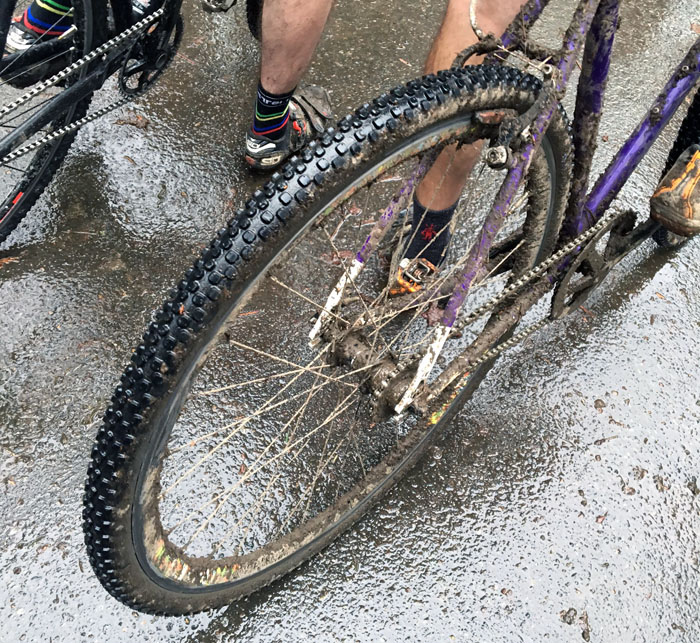
If you have been intrigued by cyclocross, give it a try. It’s great fun, and what you learn about bike handling will improve your skills on all surfaces, year-round. Don’t worry if you don’t have a cyclocross bike. Just ride the most suitable bike you have. Cyclocrossers are very relaxed about the competition – nobody complained that I rode ultra-wide tires. Last weekend, old road bikes, a randonneur bike (with the fenders removed), and mountain bikes mixed it up with the purpose-built ‘cross bikes.
And if you need cyclocross tires – whether for dry or muddy conditions – our Steilacoom 700C x 38 mm and Pumpkin Ridge 650B x 42 mm knobbies are hard to beat. I just wish they fit my old Alan, which dates from a time when 28 mm tires were “huge”. It would save me from having to re-glue my tires!
Photo credits: Westside Bicycle (Photos 1, 3, 4, 5), Natsuko Hirose (Photo 8).


